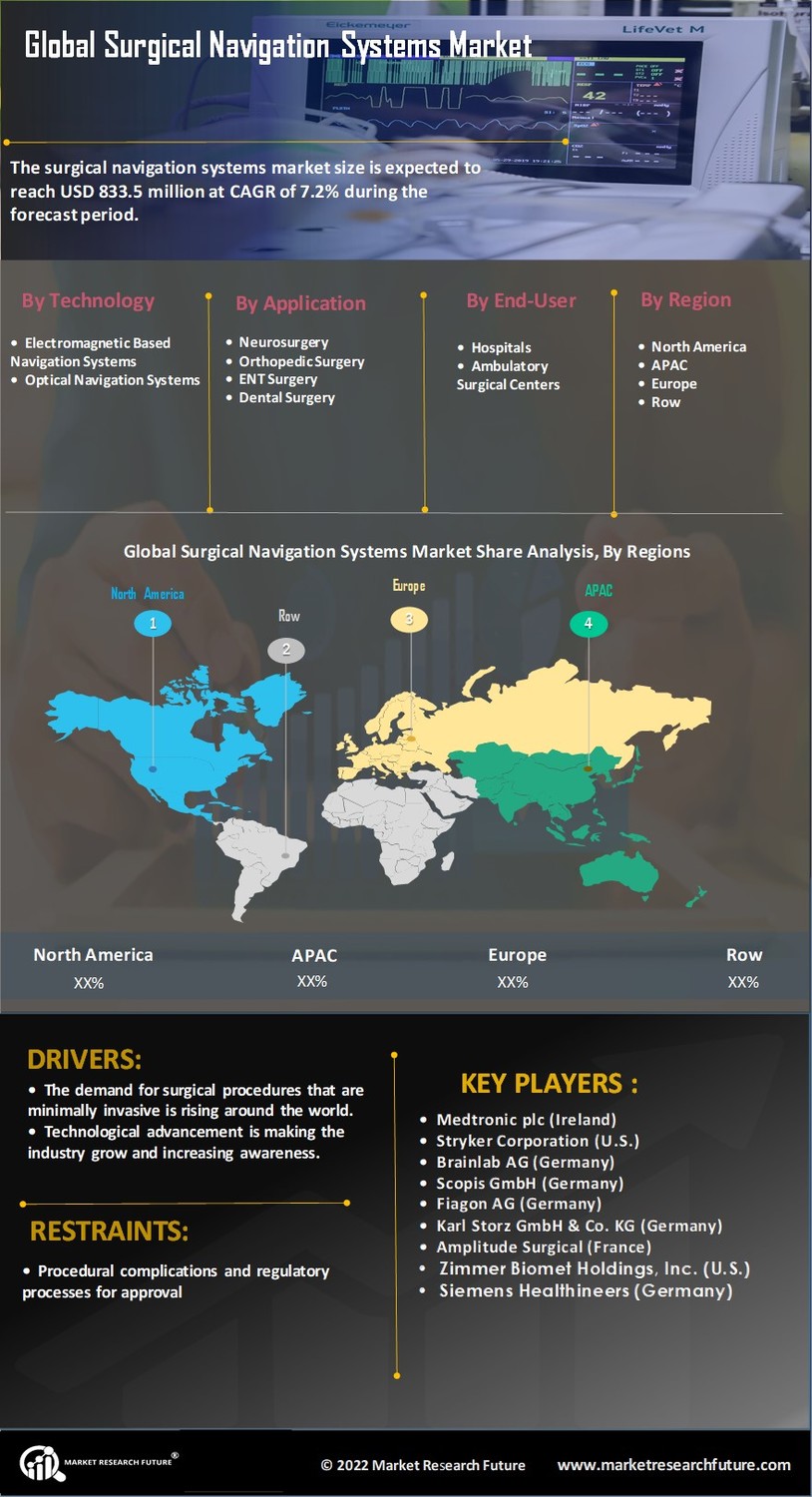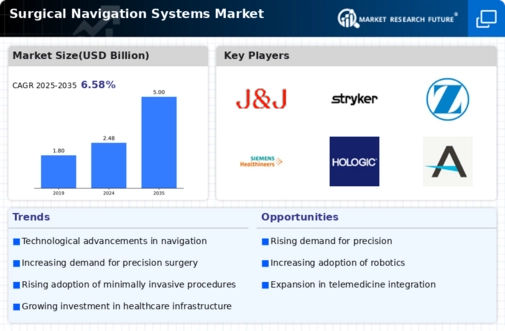Focus on Patient Safety and Outcomes
In the Surgical Navigation Systems Market, there is an increasing emphasis on patient safety and improved surgical outcomes. As healthcare providers prioritize quality care, the adoption of navigation systems that enhance precision and reduce the likelihood of errors is becoming more prevalent. Studies have shown that the use of surgical navigation systems can lead to a significant decrease in intraoperative complications, thereby improving overall patient outcomes. The market is projected to see a rise in demand for systems that incorporate safety features, such as real-time monitoring and alerts for surgical teams. This focus on patient safety is likely to drive investments in advanced navigation technologies, as hospitals and surgical centers seek to enhance their reputations and meet regulatory standards. Thus, the Surgical Navigation Systems Market is expected to grow in response to these evolving priorities.
Rising Demand for Minimally Invasive Surgeries
The Surgical Navigation Systems Market is witnessing a notable increase in the demand for minimally invasive surgeries. This trend is largely attributed to the benefits associated with such procedures, including reduced recovery times, lower risk of complications, and minimal scarring. As healthcare providers strive to meet patient expectations for less invasive options, the integration of surgical navigation systems becomes essential. Data indicates that minimally invasive surgeries are expected to account for over 60% of all surgical procedures by 2026. This shift is prompting manufacturers to develop navigation systems specifically designed for these types of surgeries, thereby enhancing their functionality and effectiveness. Consequently, the Surgical Navigation Systems Market is likely to expand as more healthcare facilities adopt these advanced technologies to facilitate minimally invasive surgical techniques.
Aging Population and Rising Surgical Procedures
The Surgical Navigation Systems Market is significantly influenced by the aging population and the corresponding rise in surgical procedures. As the global population ages, there is an increasing prevalence of chronic diseases that often require surgical intervention. Data suggests that the number of surgical procedures is expected to rise by 20% over the next decade, driven by the need for orthopedic, neurosurgical, and cardiovascular surgeries. This demographic shift is prompting healthcare providers to adopt advanced surgical navigation systems that can improve surgical accuracy and patient outcomes. Additionally, the aging population is likely to demand more personalized and effective surgical solutions, further driving the need for innovative navigation technologies. Consequently, the Surgical Navigation Systems Market is positioned for growth as it adapts to the evolving needs of an aging patient demographic.
Increasing Investment in Healthcare Infrastructure
The Surgical Navigation Systems Market is benefiting from the increasing investment in healthcare infrastructure across various regions. Governments and private entities are allocating substantial funds to upgrade medical facilities and incorporate advanced technologies. This investment is particularly evident in emerging markets, where there is a growing recognition of the importance of modern surgical techniques. As healthcare systems evolve, the demand for sophisticated surgical navigation systems is likely to rise, as these technologies are essential for enhancing surgical capabilities. Recent reports suggest that healthcare spending is expected to increase by 5% annually, which will likely include significant allocations for surgical navigation systems. This trend indicates a robust growth trajectory for the Surgical Navigation Systems Market, as more healthcare providers seek to modernize their surgical practices.
Technological Advancements in Surgical Navigation Systems
The Surgical Navigation Systems Market is experiencing a surge in technological advancements that enhance surgical precision and efficiency. Innovations such as augmented reality and artificial intelligence are being integrated into navigation systems, allowing for real-time data visualization and improved decision-making during procedures. According to recent data, the market for surgical navigation systems is projected to grow at a compound annual growth rate of approximately 10% over the next five years. This growth is driven by the increasing adoption of advanced imaging technologies, which facilitate better surgical outcomes. Furthermore, the development of user-friendly interfaces and portable navigation systems is likely to expand the accessibility of these technologies, making them more appealing to healthcare providers. As a result, the Surgical Navigation Systems Market is poised for significant growth, driven by these technological innovations.



















Leave a Comment